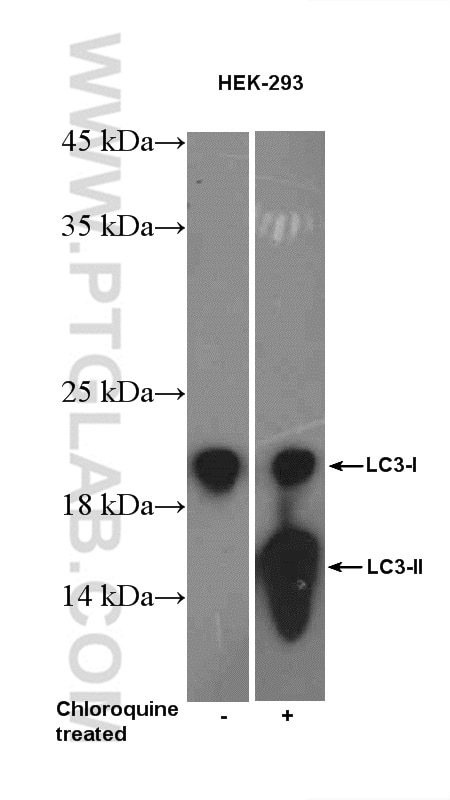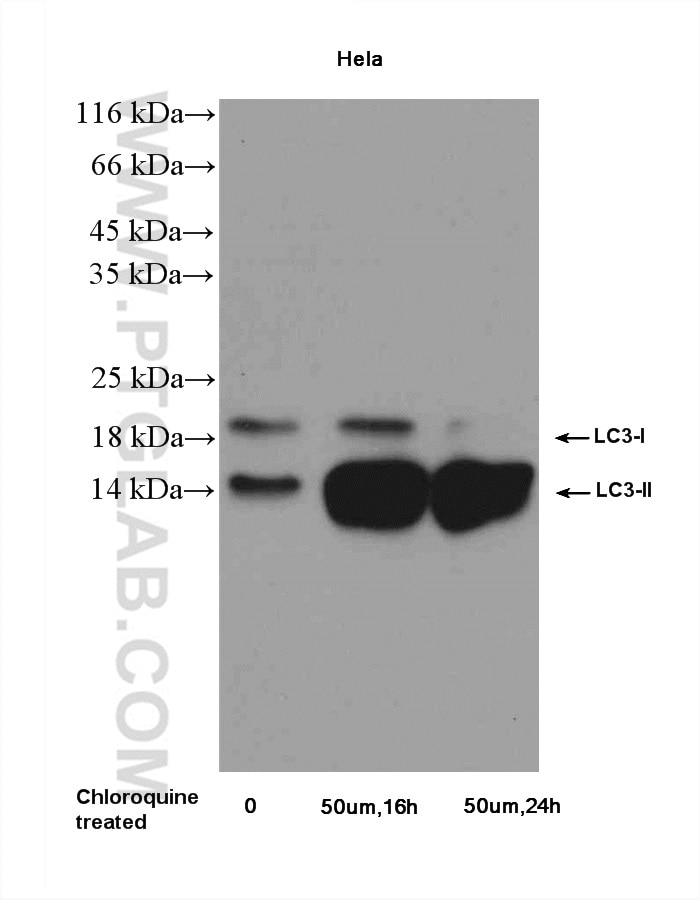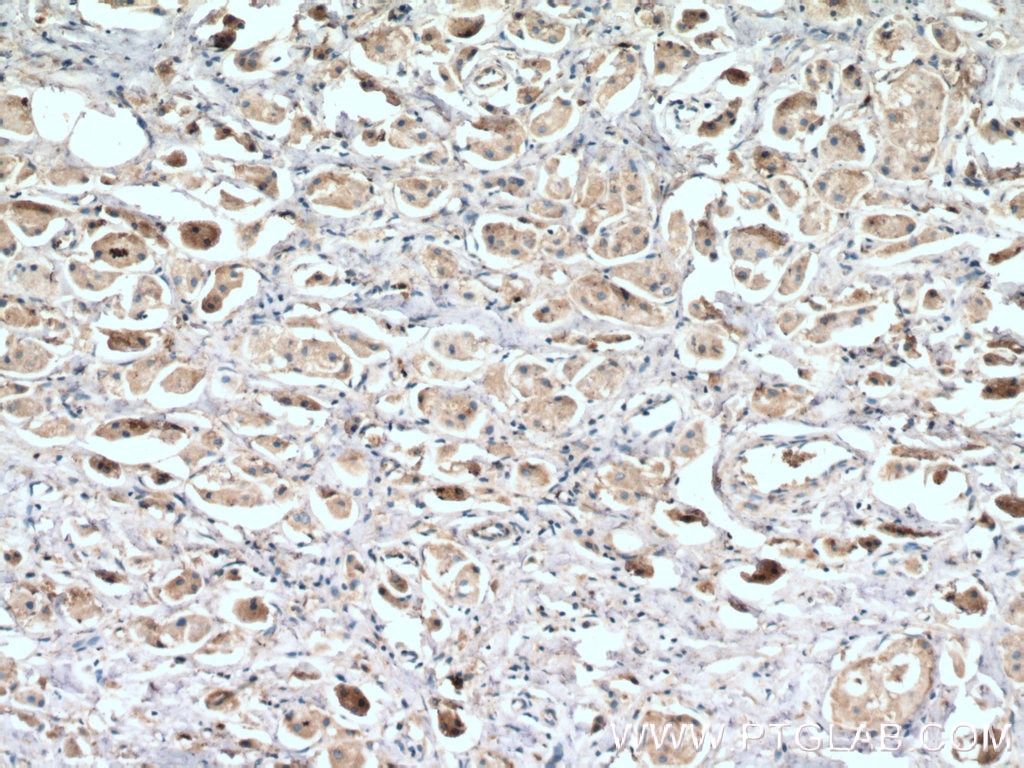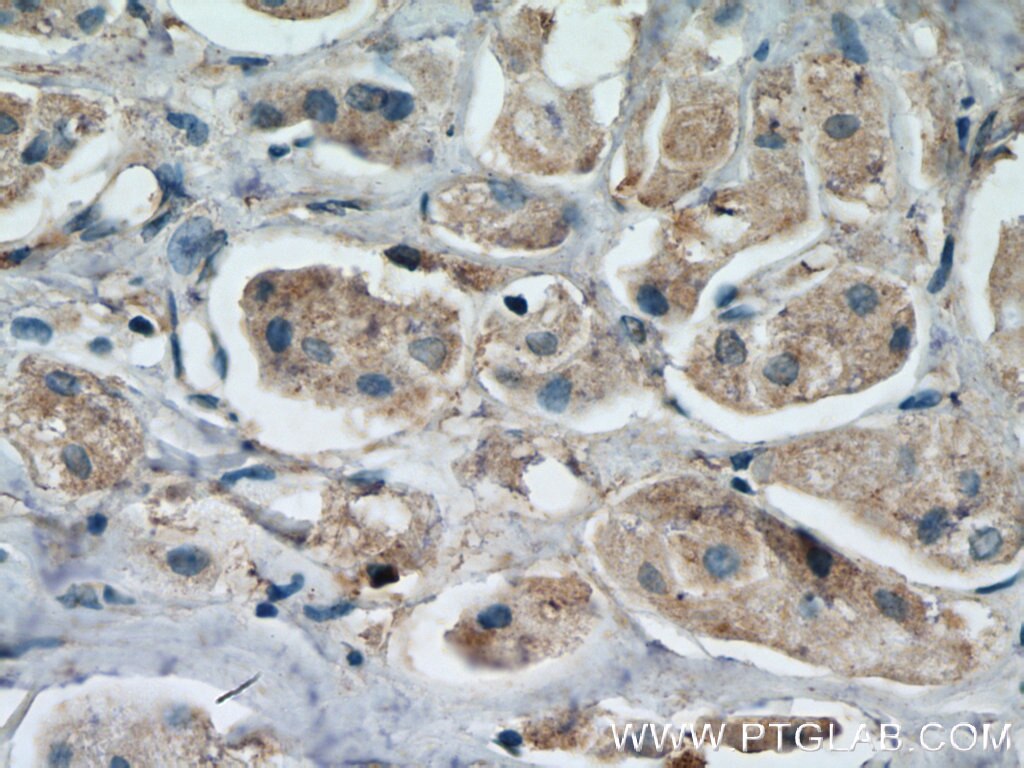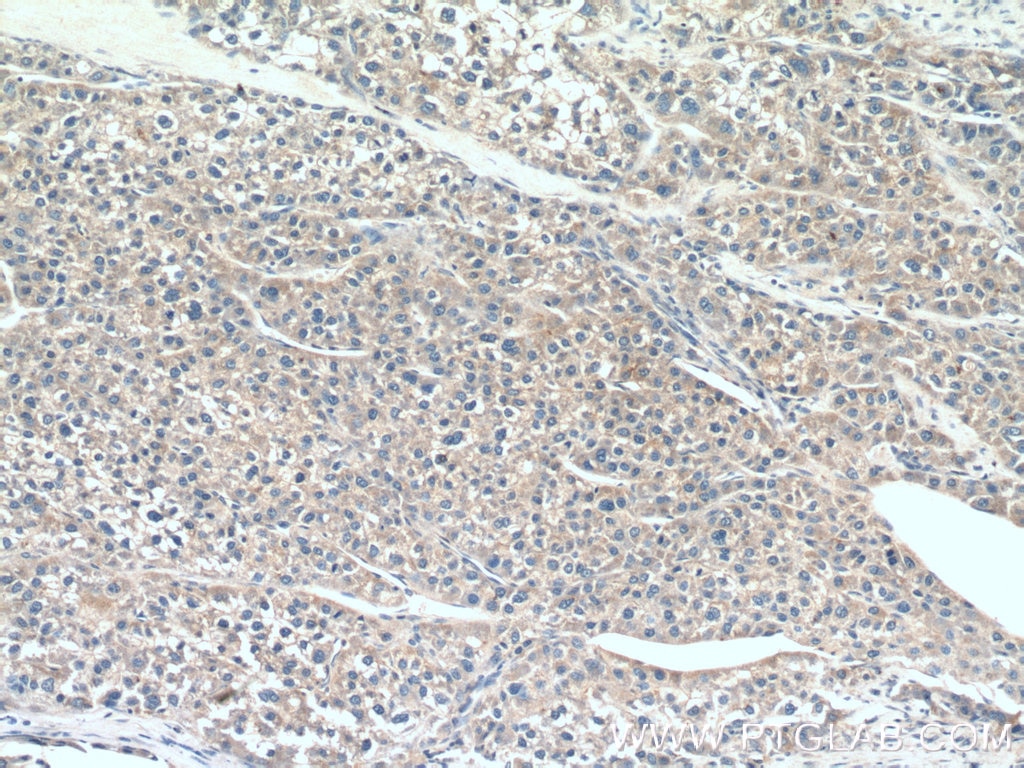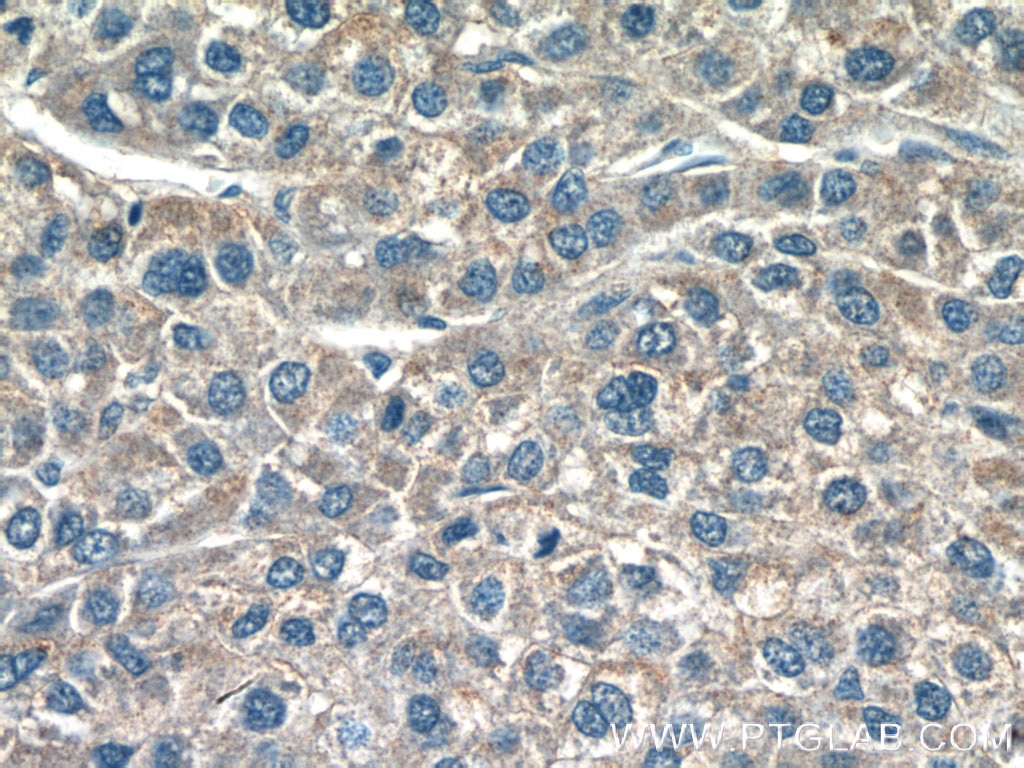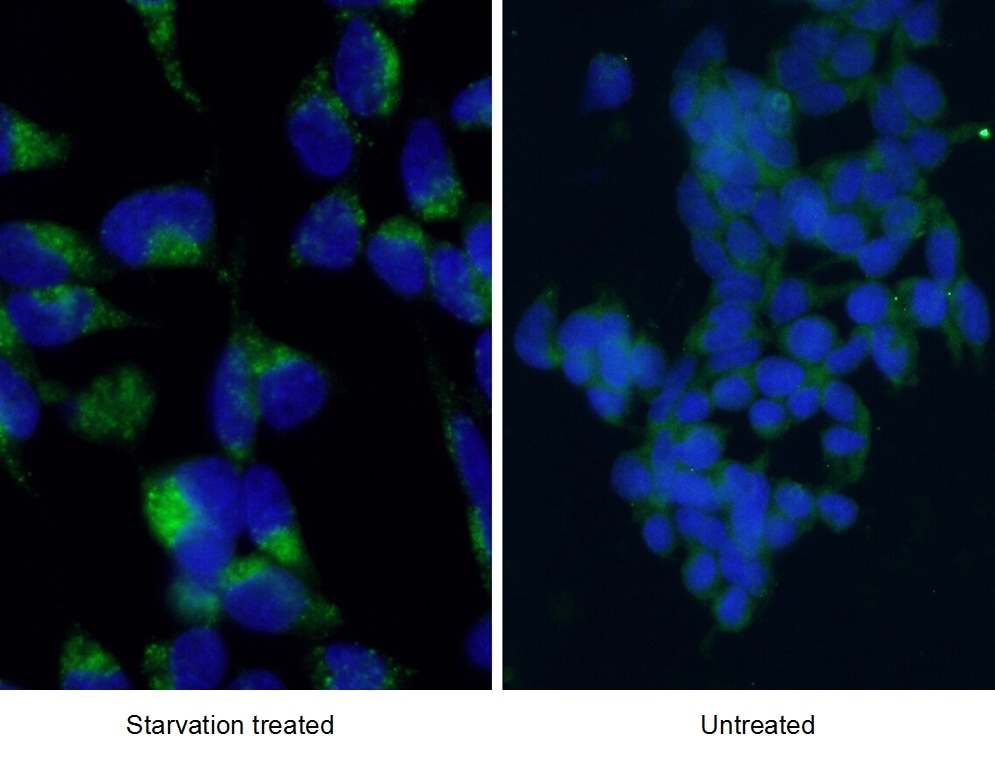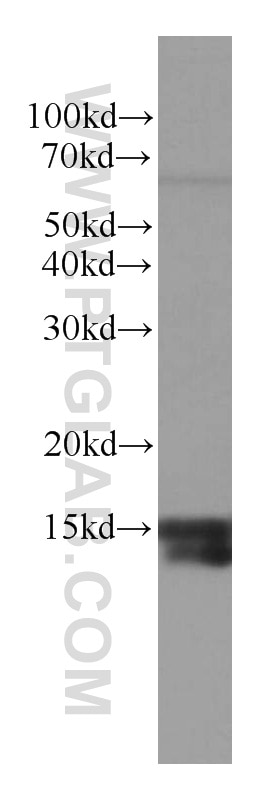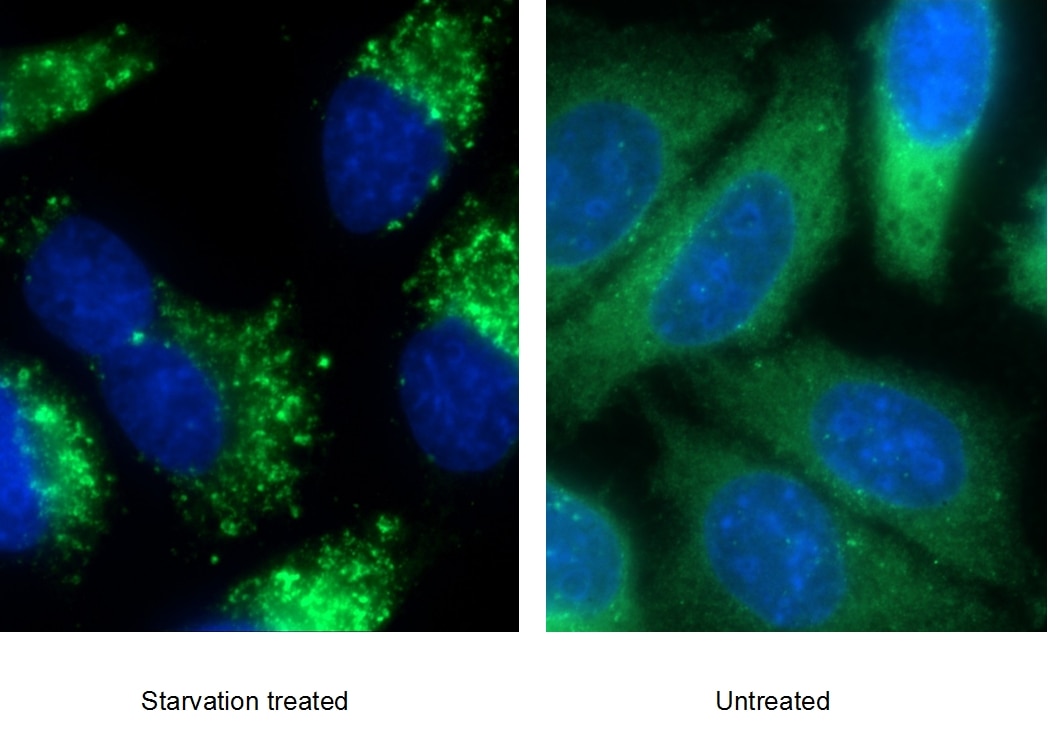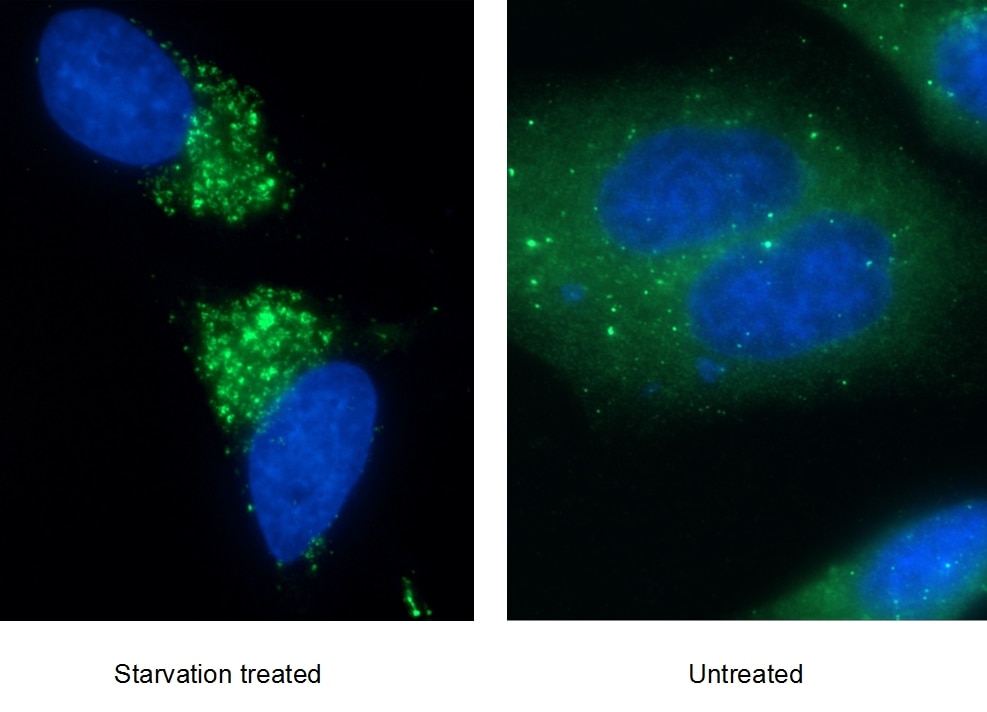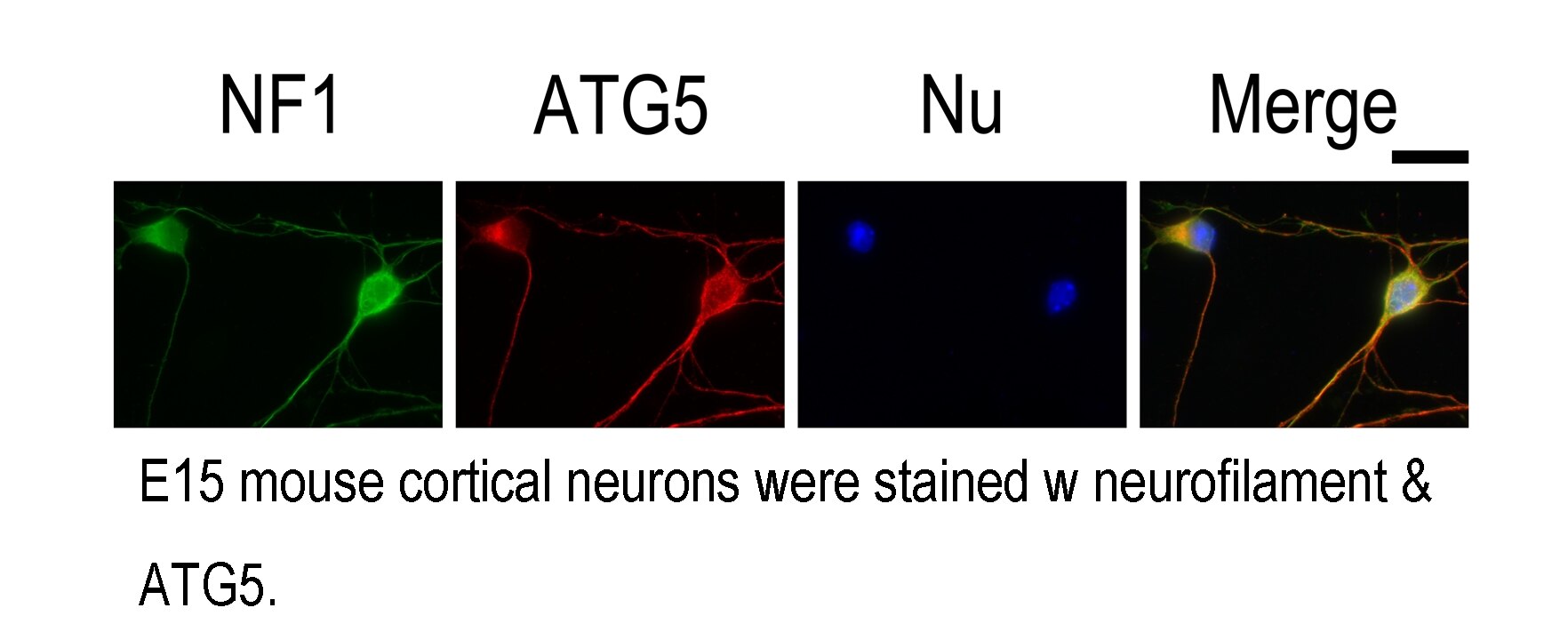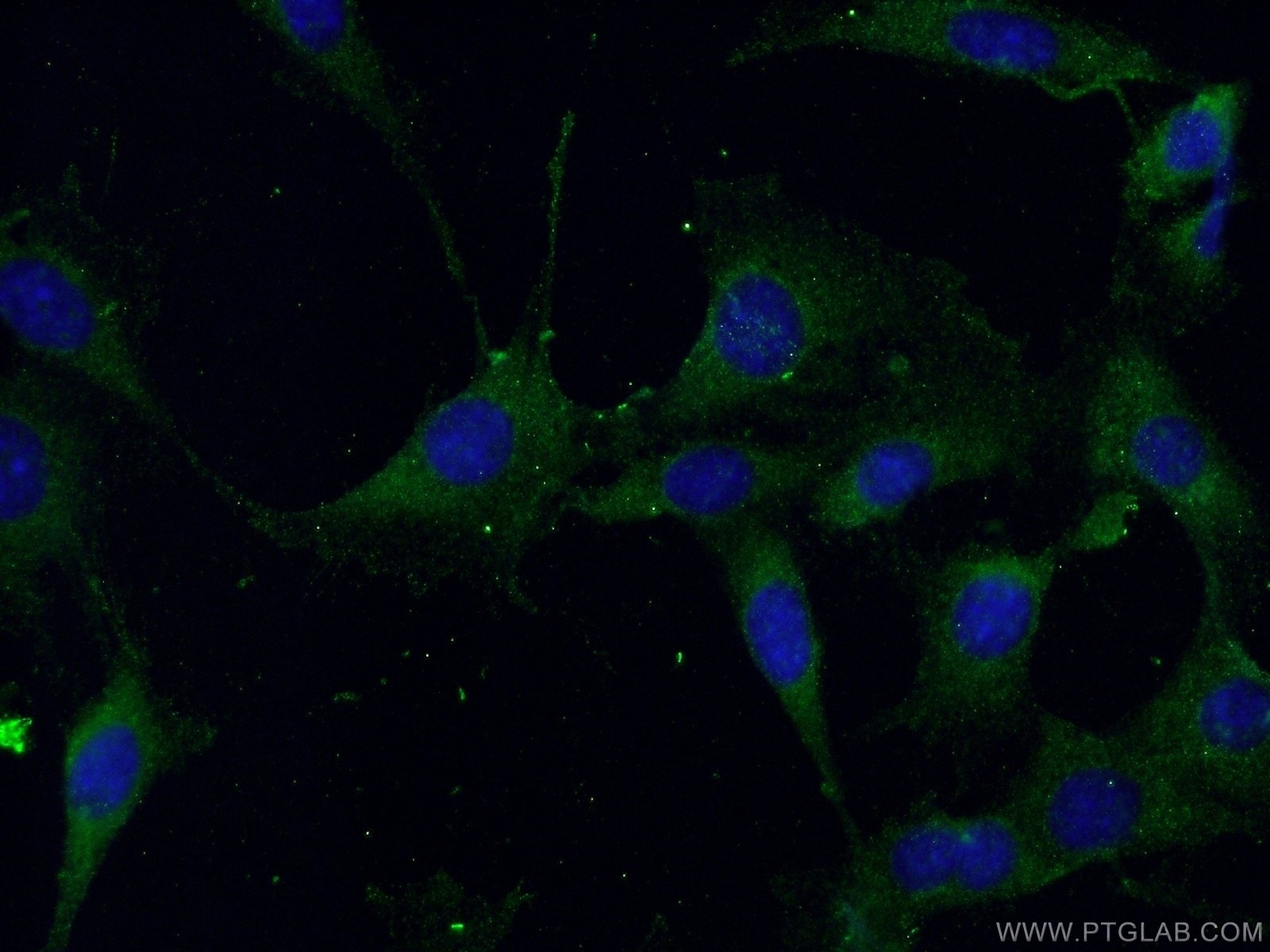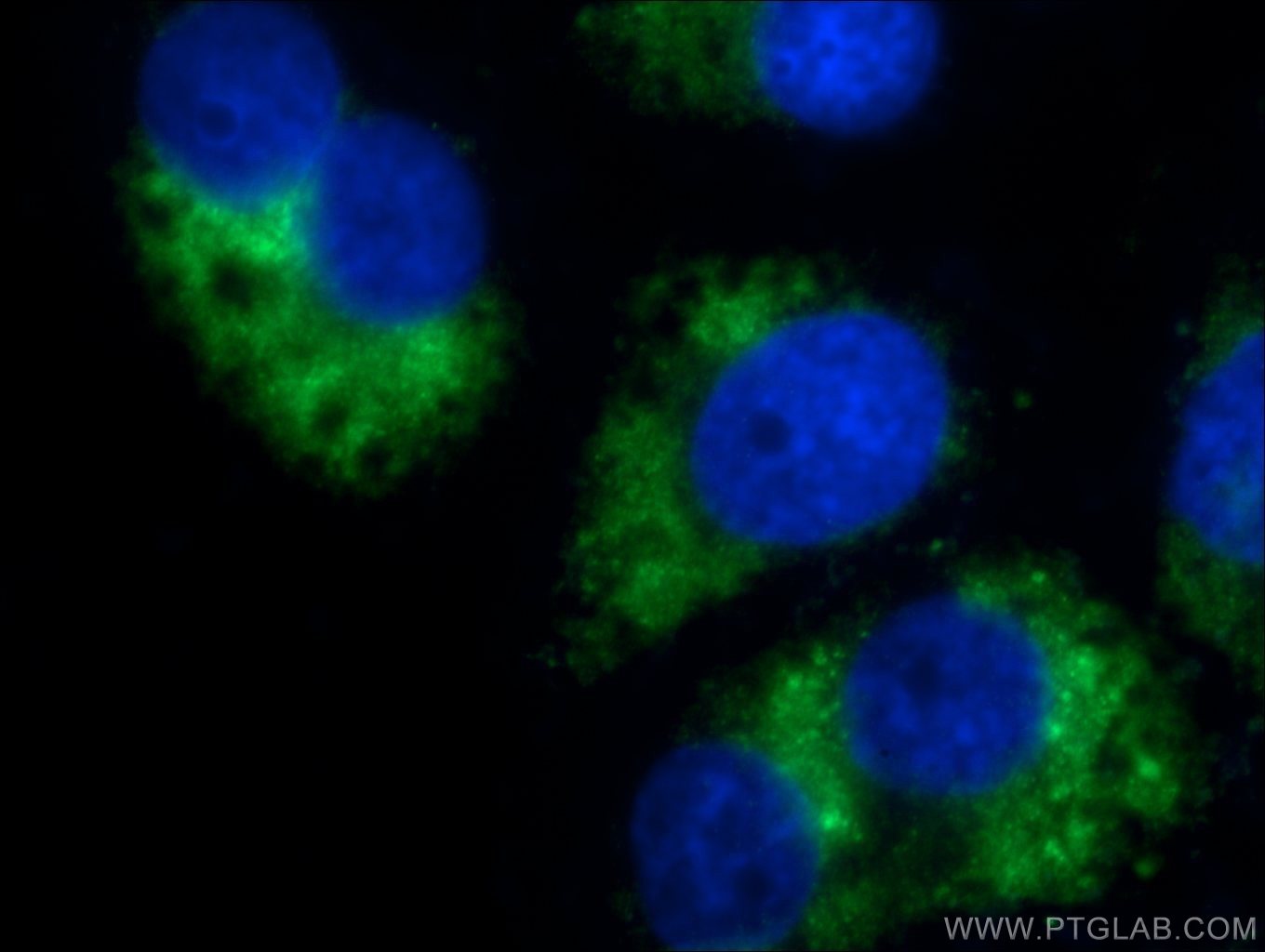LC3 Polyklonaler Antikörper
LC3 Polyklonal Antikörper für WB, IF, IHC, ELISA
Wirt / Isotyp
Kaninchen / IgG
Getestete Reaktivität
human, Maus, Ratte, Zebrafisch und mehr (2)
Anwendung
WB, IHC, IF/ICC, ELISA
Konjugation
Unkonjugiert
Kat-Nr. : 12135-1-AP
Synonyme
Galerie der Validierungsdaten
Geprüfte Anwendungen
| Erfolgreiche Detektion in WB | mit Chloroquin behandelte HEK-293-Zellen, mit Chloroquin behandelte HeLa-Zellen |
| Erfolgreiche Detektion in IHC | humanes Mammakarzinomgewebe, humanes Leberkarzinomgewebe Hinweis: Antigendemaskierung mit TE-Puffer pH 9,0 empfohlen. (*) Wahlweise kann die Antigendemaskierung auch mit Citratpuffer pH 6,0 erfolgen. |
| Erfolgreiche Detektion in IF/ICC | ausgehungerte HEK-293-Zellen |
Empfohlene Verdünnung
| Anwendung | Verdünnung |
|---|---|
| Western Blot (WB) | WB : 1:500-1:2000 |
| Immunhistochemie (IHC) | IHC : 1:50-1:500 |
| Immunfluoreszenz (IF)/ICC | IF/ICC : 1:50-1:500 |
| It is recommended that this reagent should be titrated in each testing system to obtain optimal results. | |
| Sample-dependent, check data in validation data gallery | |
Veröffentlichte Anwendungen
| WB | See 58 publications below |
| IHC | See 6 publications below |
| IF | See 22 publications below |
Produktinformation
12135-1-AP bindet in WB, IHC, IF/ICC, ELISA LC3 und zeigt Reaktivität mit human, Maus, Ratten, Zebrafisch
| Getestete Reaktivität | human, Maus, Ratte, Zebrafisch |
| In Publikationen genannte Reaktivität | human, Hausschwein, Huhn, Maus, Ratte |
| Wirt / Isotyp | Kaninchen / IgG |
| Klonalität | Polyklonal |
| Typ | Antikörper |
| Immunogen | LC3 fusion protein Ag2781 |
| Vollständiger Name | microtubule-associated protein 1 light chain 3 alpha |
| Berechnetes Molekulargewicht | 121 aa, 14 kDa |
| GenBank-Zugangsnummer | BC015810 |
| Gene symbol | LC3 |
| Gene ID (NCBI) | 84557 |
| Konjugation | Unkonjugiert |
| Form | Liquid |
| Reinigungsmethode | Antigen-Affinitätsreinigung |
| Lagerungspuffer | PBS mit 0.02% Natriumazid und 50% Glycerin pH 7.3. |
| Lagerungsbedingungen | Bei -20°C lagern. Nach dem Versand ein Jahr lang stabil Aliquotieren ist bei -20oC Lagerung nicht notwendig. 20ul Größen enthalten 0,1% BSA. |
Hintergrundinformationen
LC3, also known as microtubule-associated protein 1 light chain 3 (MAP1LC3), is a mammalian homolog of the yeast Atg8p (autophagy-related 8 protein) that is involved in autophagy process. Three isoforms of LC3 exist as LC3A,LC3B, and LC3C. LC3 is first synthesized as pro-LC3, and undergoes C-terminal cleavage to yield a cytosolic precursor known as LC3-I. During autophagy LC3-I is subsequently conjugated to PE lipid as lipidated form: LC3-II. The lipidated form migrates faster on SDS-PAGE gel. The increased the level of LC3-II has been widely used as autophagy marker. This antibody recognizes both LC3-I (18-20 kDa) and LC3-II (14-16 kDa).
Protokolle
| Produktspezifische Protokolle | |
|---|---|
| WB protocol for LC3 antibody 12135-1-AP | Protokoll herunterladen |
| IHC protocol for LC3 antibody 12135-1-AP | Protokoll herunterladen |
| IF protocol for LC3 antibody 12135-1-AP | Protokoll herunterladen |
| Standard-Protokolle | |
|---|---|
| Klicken Sie hier, um unsere Standardprotokolle anzuzeigen |
Publikationen
| Species | Application | Title |
|---|---|---|
Cell Death Differ ATG4D is the main ATG8 delipidating enzyme in mammalian cells and protects against cerebellar neurodegeneration. | ||
Oxid Med Cell Longev Mesangial Cell–Derived Exosomal miR-4455 Induces Podocyte Injury in IgA Nephropathy by Targeting ULK2 |
